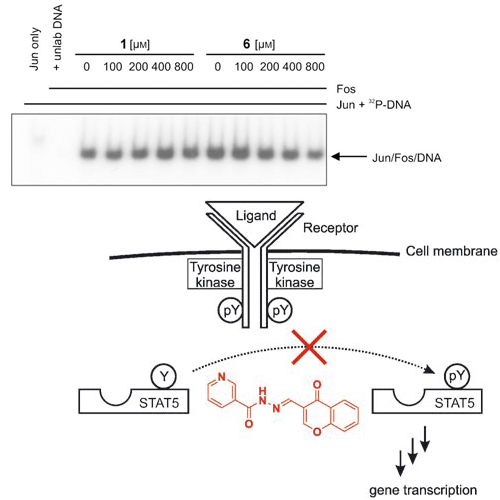Discovery of Chromone-Based Inhibitors of the Transcription Factor STAT5
05-Feb-2008
Molecular signals originating at the cell surface are conveyed by a complex system of interconnected signaling pathways to the nucleus. They converge at transcription factors, which in turn regulate the transcription of sets of genes which ultimately determine the cellular phenotype. Whereas enzymes involved in signaling pathways, that is, intracellular kinases and phosphatases and receptor tyrosine kinases, have been recognized and exploited as intervention points for modulating cellular properties with small organic molecules, transcription factors are often considered “nondruggable” because of their lack of enzymatic activities. However, as many transcription factors require interactions with themselves or other proteins, cell-permeable inhibitors of protein–protein interactions could provide an approach towards the inhibition of this important class of proteins, and would thereby allow for the analysis of transcription factor functions and for therapeutic intervention of diseased states. Initially regarded as unfeasible, a growing body of evidence indicates that the inhibition of protein–protein interactions can be potently and selectively achieved by drug-like molecules, some of which are even undergoing clinical trials.











